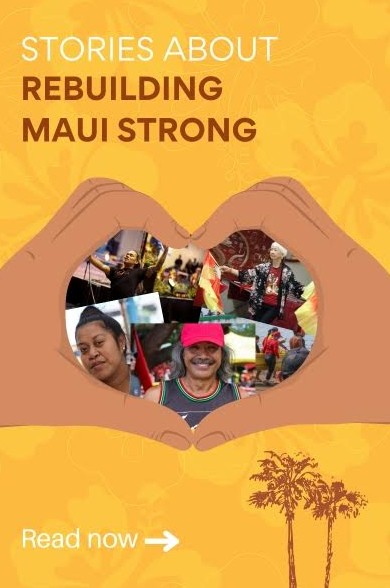By Jana Monji
Godzilla Minus One roars into US theaters today, announcing the arrival of a new cinematic auteur: Takashi Yamasaki (Stand by Me Doraemon, 2014; Lupin III: The First, 2019). Yamasaki wrote, directed and, with Kiyoko Shibuya, did visual effects for this stunning revival of a very Japanese Godzilla.
The original 1954 black-and-white Japanese film, without Raymond Burr inserted as a journalist, focused on scientists. One scientist concludes that Godzilla was disturbed by hydrogen bomb testing in the Bikini Islands. Another eventually sacrifices himself to save Japan.
In this film, the main character is a former kamikaze pilot, Kōichi Shikishima (Ryunosuke Kamiki) who decided against suicide, but also failed to act when he and a crew of mechanics were under attack by Godzilla on the fictional Odo Island (大戸島).
In the original Godzilla film, Odo Island was where Godzilla was first sighted by villagers in a post-war Japan. In this film, Japan is in the last months of World War II, when kamikaze fighters were expected to sacrifice themselves for their country. Shikishima pretends that his airplane has mechanical problems and lands on Odo Island which is an airplane repair station. The Navy Air Service mechanics, led by Sōsaku Tachibana (Munetaka Aoki), discover Shikishima’s pretense, but soon after, come under attack by Godzilla.
Tachibana orders Shikishima to get back into the pilot seat and use the airplane’s gun to kills Godzilla, but once in the plane, Shikishima freezes with fear. In the end, only Shikishima and Tachibana survive, but Tachibana hands the blood-stained photos of the dead mechanics’ loved ones to Shikishima for him to remember his cowardice.
Returning to a bombed-out section of Tokyo, Shikishima learns from a neighbor, Sumiko (Sakura Ando), that his parents have died. Through a chance encounter, Shikishima meets Noriko (Minami Hamabe), a woman who has resorted to stealing in order to feed herself and an orphaned infant. Shikishima, Noriko and the baby, Akiko, become a family unit although Noriko and Shikishima’s relationship remains platonic.
In order to support his newly constituted family, Shikishima takes on dangerous but well-paid work where his military training comes in handy: clearing the mines set by both the US and Japanese armies from the surrounding waters. For this, small wooden boats are used because the US military dropped magnetic mines. Once located, Shikishima shoots them until they explode.
During this time, the US continues its experiments with nuclear bombs, detonating them in the Bikini Islands. This doesn’t only disturb Godzilla, but causes him to mutate into a larger creature with atomic breath and the ability to regenerate after injury.
Because the US cannot conduct military maneuvers and detonate bombs near Japan because they are locked in a Cold War with the Soviet Union and the US fears the Soviet Union would either initiate reciprocal military actions over a perceived threat or use any defense against Godzilla as an excuse to take aggressive military actions, the Japanese must defend themselves when Godzilla’s trajectory is Tokyo.
Shikishima’s family will be threatened and Shikishima will face Tachibana’s contempt and his own fears while working with his team to defeat Godzilla.
This film improves upon the design of Godzilla from the 2016 Shin Godzilla, but instead of telling the story of men in a bureaucracy, Yamazaki’s script tells the story of a defeated, impoverished country, bombed into scraps and shacks and its ordinary people living in desperation through the eyes of this disgraced pilot. Shikishima deals with survivor guilt, PTSD and loss of his family. And someone has to take on the risk of clearing mines post-war, a task also covered in the 2016 film about Denmark, Land of Mine.
Unlike the 1956 heavily edited US version of the original Godzilla film, Godzilla, King of the Monsters!, there is no White person interpreting what is happening. While the Legendary Godzilla feature films have always starred White people, even when it made no sense at all, Godzilla Minus One, reclaims what may be Japan’s most iconic export as its own.
The title, according to the article by James Grebey, Godzilla as an Undiscerning God, means that while World War II left Japan at zero, “the arrival of Godzilla sets it back to ‘minus one.'”
Godzilla Minus One premiered on 18 October 2023 as the closing film for the 36th Tokyo International Film Festival. It was released in Japan on 3 November 2023 to celebrate the 70th anniversary of the Toho franchise. The film was released on 1 December 2023 in the US and Canada. In Japanese with English subtitles. This is the best Godzilla film in decades. If you can, see this film in 4DX.
Support our June Membership Drive and receive member-only benefits. With less than four days left in our fundraising drive, we are running out of time. We are just 51% of our goal of $10,000 in new donations and monthly and annual donation pledges and 44% of our goal of gaining 25 new recurring donors by the end of the month. We need your help during these challenging times. Please help to ensure quality content in amplifying the voices of the AAPI community.
We are published by the non-profit Asian American Media Inc and supported by our readers along with the Robert Wood Johnson Foundation, AARP, Report for America/GroundTruth Project & Koo and Patricia Yuen of the Yuen Foundation.
You can make your tax-deductible donations here via credit card, debit card, Apple Pay, Google Pay, PayPal and Venmo. Stock donations and donations via DAFs are also welcomed. Contact us at info @ asamnews dot com for more info.




